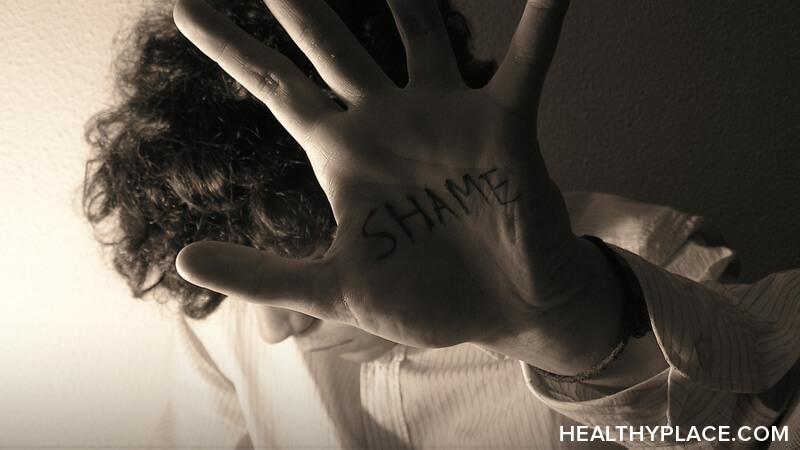Releasing the Secret Shame of Self-Harm

The secret shame of self-harm is a heavy burden—one that, especially when borne alone, can slow us down and hinder the healing process. Self-harm recovery begins with learning to let the shame of self-harm go.
Feeling Shame for Self-Harm
Self-harm isn't shameful, yet many of us feel shame and guilt for hurting ourselves; I know I used to. It felt wrong that I should feel so low when I knew there were people in the world living in far worse circumstances than I did. I felt stupid for feeling like I needed to hurt myself to feel better. I felt embarrassed about my wounds and the lies I used to cover them up. I even felt ashamed, at times, that my wounds weren't more serious—like they somehow didn't count as real self-harm.
It took me a long time to realize this kind of shame around self-harm is emotional quicksand. The longer you wallow in it, the deeper you sink, and the harder it becomes to pull yourself back up and onto stable ground. The difference between this and real quicksand, however, is that no matter how deep you sink into shame, it is always possible to climb back out again. It isn't easy—in fact, at times, it may feel impossible—but in my experience, it's a critical part of the healing process.
Letting Go of Self-Harm Shame
So, how do you let go of your self-harm shame? It may not surprise you to know that I do not have a simple, easy answer that is guaranteed to work for everyone. As is often the case when it comes to mental health, the best strategy for you will be tailored specifically to your unique circumstances and needs.
Unfortunately, this means I can't tell you precisely what you can do that will allow you to release your secret self-harm shame and move on. This is why, if you are able, it's best to work with a licensed mental health professional who can provide you with insight into your recovery needs and guide you toward the recovery strategies that will work best for you.
However, I know not everyone has equal access to healthcare—and not everyone reading this post is ready to reach out for that kind of support just yet. As such, I'd like to share the techniques that worked well for me. I hope this list will help you begin exploring your options and, eventually, build your own list.
- Journaling: Writing about my shame (and recognizing it for what it was) was my first step toward healing.
- Positive self-talk: I practiced replacing negative self-talk with positive self-talk to rebuild my self-esteem and lessen my feelings of shame.
- Forgiveness exercises: I wrote letters to myself to express compassion and forgiveness until I finally began to believe in them.
- Reading: I read about others' recovery journeys, which helped me gain perspective and greater empathy for myself and others in my situation.
- Connecting: It took me a long time to get to this step but sharing my experience with others helped me realize I had nothing to be ashamed of.
There are still days when I feel my old shame hovering behind me like a shadow, waiting to catch me in a dark moment. What my shadow doesn't know, however, is that even though I do still have those dark moments—everyone does from time to time—I'm getting better and better at finding my way back to the light.
APA Reference
Kim Berkley
(2022, October 20). Releasing the Secret Shame of Self-Harm, HealthyPlace. Retrieved
on 2025, December 5 from https://www.healthyplace.com/blogs/speakingoutaboutselfinjury/2022/10/releasing-the-secret-shame-of-self-harm